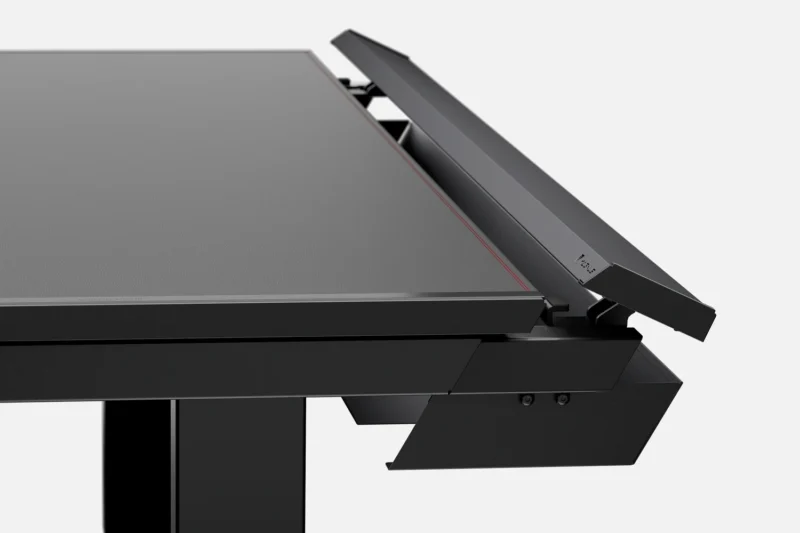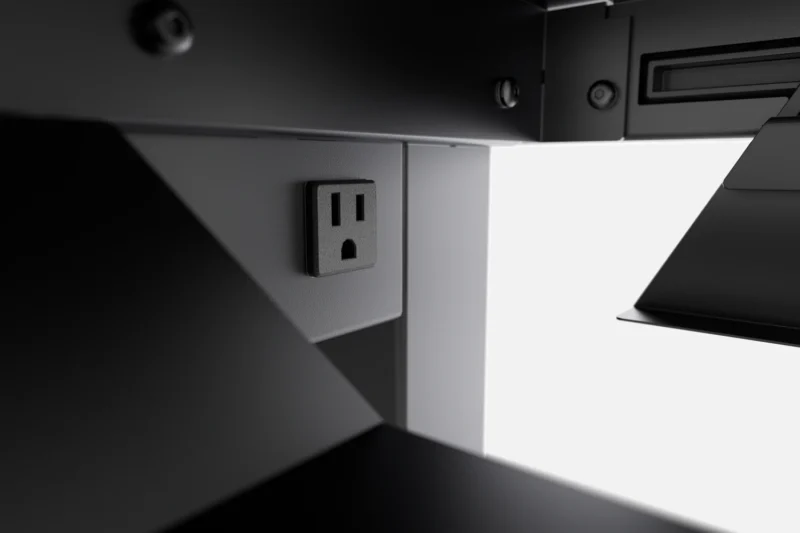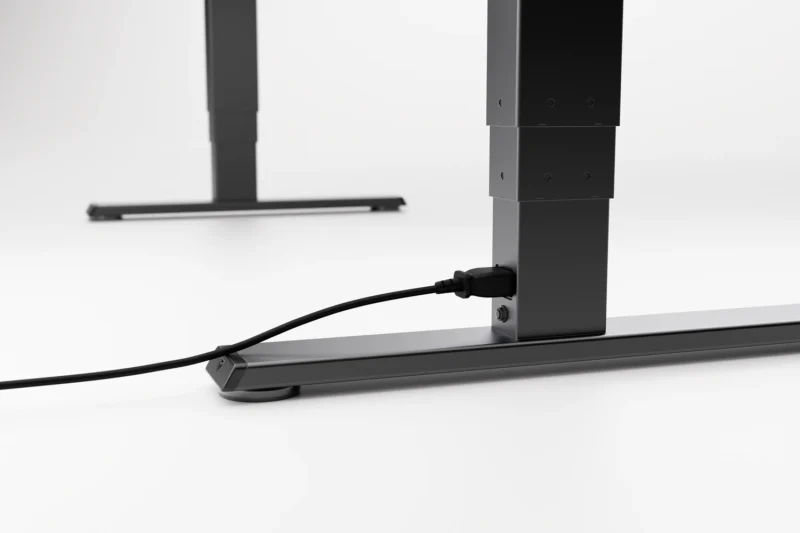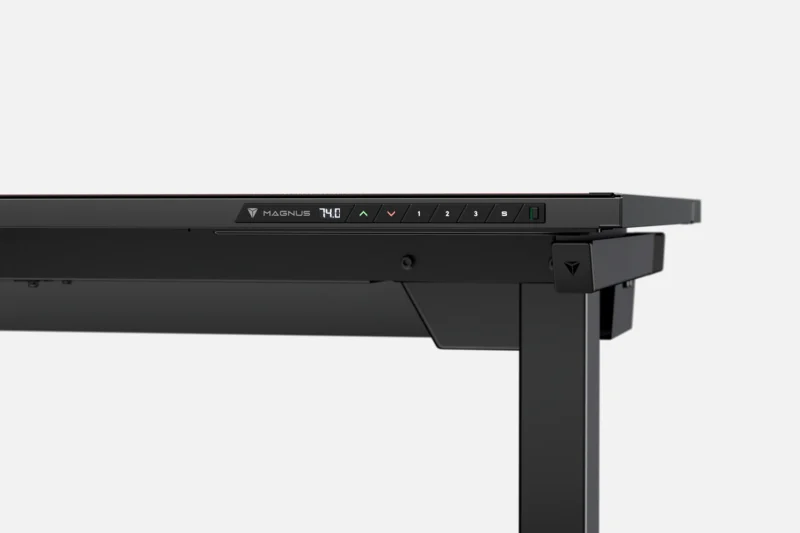Secretlab Magnus Pro Review: The Best Desk I’ve Ever Used
![]()
As much as photographers are seen in the field, camera in hand, you can be sure that at least twice as much time per year is spent at a desk. It’s not exciting, it’s not nearly as fun, but it’s necessary.
A year ago, I moved into a new studio and because I had more space than before, I decided I could invest in a larger desk. I’ve used four different desks over the last several years as I moved apartments, cities, and eventually states, and in that time I started a mental list of all the things that bothered me about each. Past desks have proven too small to comfortably fit my displays, speakers, microphone, and peripherals, for starters.
Some were too thick, which meant that I couldn’t easily mount monitor stands to them without drilling holes. Some were too thin, which felt flimsy and would shake when subjected to even minor normal desk activities, like typing. I like adjustable, standing desks and most weren’t particularly attractive, either featuring ugly tops or, if they had nice looking ones, they didn’t accommodate for cable management.
Often, standing desks have a big motor hanging off the underside. I also don’t like the big holes most brands stick in the corners to route cables through. Both those factors feel like afterthoughts — like they started with the desk top and tacked on pieces to get to the finished product.
I really liked my HumanCentric desk because it featured a real wood top, but it felt crowded with the number of items I needed on it and it easily got cluttered with cables. Its motor is also pretty noisy. Plus, in my new space, I wasn’t really feeling the “wood” aesthetic.
After doing some research for a new office chair, I stumbled across the Secretlab Magnus Pro. I knew Secretlab as a well-respected gaming chair company but at the time, I had no idea the company also made desks. I looked at what to expect and found that every complaint I raised with my previous desks was seemingly answered here. So, while it wasn’t cheap, I decided to spend the $950 for the base desk, $50 for a plain black desk mat, and a total of $400 more for a single and dual-arm monitor stand. A few months later, I added the $50 for the cable management bundle and the $30 magnetic headphone hanger into the mix.
That’s $1,430 for my new workstation, not counting other peripherals, my computers, and three monitors. I’m aware that’s a lot but I’ve never been happier at my desk.
Design and Build Quality
The Magnus Pro feels built to last. Its legs and frame are steel while the top is MDF with a steel top. While it would have been nice to have a full steel desktop, I can see how that would be not only very heavy but also a lot more expensive. As it stands, my desk weighs 150 pounds. It ships in two boxes and yeah, it’s heavy, but once I had it into my room I was able to assemble it by myself fairly quickly. The instructions were detailed and it comes with the tools you need, which is a nice touch. Speaking of shipping, I was pretty surprised at how quickly Secretlab got my order out. The company manufactures and ships out of Utah and I had everything within a week of placing the order, which was nice.
![]()
The desk I bought is the 70-inch “XL” version which measures 70 by 31.5 inches. There is a smaller option available that measures 59.1 by 27.6 inches. Both have a variable, customizable height between 25.6 and 49.2 inches and while you can freely move it in that range, you can program up to three heights into it for quick access to specific orientations. The desktop is rated to hold up to 118 kilograms (260 pounds) which is, frankly, overkill for most people — it certainly is for me.
I should mention that the control panel for the desk height is integrated into the desk, so you can’t hit it with your chair when sliding around. While not exclusive to Secretlab’s desk design, it’s more common to see a protruding control panel that can catch on you or your chair as you pass by. The motor that drives the adjustable height is quiet, but not silent. It is the quietest that I’ve tested though between it, anything from Flexispot, and the HumanCentric system.
A Desk That Knows Its Audience
What makes the Magnus Pro such a delight is how it is built with the understanding that the classic desk, or even most modern standing desks, are flawed in their fundamental philosophy of how they will be used with modern technology. Photos of desks or sample layouts on store floors never seem to consider how many cables it takes to realistically operate a real workstation, even if that workstation is based on just a laptop and a single extra monitor. Everything requires power and needs to be connected, so start to increase the number of displays, add in an external SSD or a card reader along with a microphone or webcam, and suddenly you have a rat’s nest to deal with.
On most desks, that means stacks of cables either on your desk or piled behind it, making the back wall you probably set your desk against look messy and disorganized — because it is. If you’ve got a desk sitting in the middle of a room, as interior designers love to pretend a lot of people do, then it’s an even worse problem as those cables are displayed for all to see.

The Magnus Pro successfully alleviates the messy cable situation in both my more typical use case of putting my desk up against a wall and also the more unusual one of having it in the middle of the room, since it has a “pocket” or “tray” along and under the rear of the desk where all cables can be routed. I like this approach because cables are truly hidden, not just tucked under the desk: it’s a fully enclosed shelf inside the Magnus Pro. If there are exposed cables on my desk it’s either because I want them there.
Inside that tray, which can be accessed by lifting on the hinged cover, is a lot of space for cables as well as power strips which I then route into my favorite part of this desk: the integrated power supply.

Secretlab touts this as the world’s first single-cable proprietary power solution and it allows you to power the desk and every electronic device inside of it with a single cable, eliminating the messy wire look. Secretlab says the Magnus Pro has a rating of 220-240V AC, 50/60Hz, 10A while the Xl has a rating of 120V AC, 60Hz, and 13A. I have had no problem running my Mac Studio, three monitors, peripherals, and even some of my desk lighting through it.

Because everything is integrated, you don’t have to worry about the cables when you change the desk height — another advantage of this design.
The desk top doesn’t need a mat, but Secretlab offers several faux leather options and I’m glad I went with one, as I don’t love the feeling of plain steel on my forearms. I eventually also picked up a larger mouse pad, but I know I’m in the minority on using these every day. I think most will be perfectly happy with the Desk Mat options Secretlab offers, and I do recommend them. They attach to the desk magnetically, which is a nice touch and keeps them from sliding around.
The optional cable management kit I mentioned includes some metal brackets that magnetically attach to the backside of the Magnus Pro’s legs so I can route more cables in and out of the desk (like my PlayStation and PC that sit off to the side) and continues the clean look that the integrated power system allows. It also includes a set of three magnetic cable clips that keep cables from sliding off the desk surface and are a lovely red color (my favorite).
The aforementioned optional monitor arms are also nice and feature magnetic cable management and cleanly attach to the inside of the cable management tray for an understated, clean overall look.

What I like about the Magnus Pro is that its design tells me the company started with a problem first and then engineered a solution rather than starting with a desk and adding parts that make it mostly work for modern needs. Secretlab is a company that caters to gamers and as such, they know what is required for that end user. Photographers and videographers don’t really differ that much from gamers from a computing needs standpoint so it makes sense that what Secretlab built here fits so well into what I was looking for as a video and photo editor.
I didn’t buy all the special accessories that you can use with the Magnus Pro like the PC stand that attaches to the desk leg or the desk riser, but there are several that are available that allow you to customize your desk. For example, if I was mainly a laptop user, I would probably check out the laptop mount attachment. You can also get RGB lighting, but since my office has plenty of that already, I chose to pass on it.
One Year Later
I opted to hold my opinion of the Magnus Pro for a year because I wanted to see how it held up to daily use for that long, as it’s hard to really give an honest opinion of furniture if you haven’t used it for a while. One year later and I have to say I am just as pleased with it now as I was when I first installed it. Because of how large it is, I am able to really spread out and I don’t feel cramped. The lack of cable mess makes me feel mentally organized and clean, which improves my mental state and helps me work more efficiently.
Everything works as perfectly now as it did when I first bought it. Other than the integrated power system, I think my favorite part about this desk is how stable it is. I really have to intentionally rock the desk to get it to move. When typing, it stays perfectly still and, since I’m floating my monitors on arms, that’s a blessing. I would hate to think how irritated I would be if my monitors slightly shook every time my fingers hit a key.
The Best Desk I’ve Ever Used
I’ve tried everything from “traditional” desks through multiple standing desks and what Secretlab has made in the Magnus Pro is, in my opinion, easily the best for an actual working professional. Other desks might look nicer as far as materials go — but that’s subjective. I happen to think my desk looks great and if I want to change it up, Secretlab has many different Desk Mat options in different colors that I could try and they aren’t outrageously expensive either. A simple white or red and black mat is $50 while I could splurge on a branded Cyberpunk or Batman one for a still-reasonable $80.
The Magnus Pro is a big, sturdy, well-designed desk. Simple as that. I did end up buying a Secretlab chair too (anyone who watches the PetaPixel podcast probably will have seen that), and I’ve been quite pleased with it as well.
![]()
Are There Alternatives?
Looking at the price, I have to say that while the Magnus Pro is expensive, it’s fair. The HumanCentric wood-top desk doesn’t have cable management and has a much louder motor, and that’s $1,299 for the smallest size. That jumps up to $2,299 if you want the 70-inch size with a walnut top. Flexispot are the kings of afforable and they work nice enough, too. Those are a lot less expensive and you could get a 70-inch adjustable desk for under $700. They’re just not as well made and also look like they’re meant to be at home in a high-rise, not your home office or studio.
Another brand I’ve heard positive feedback about is Eureka Ergonomic, although I can’t say I’ve personally used one. The company offers a range of standing desks in a wide variety of styles, some of which look really cool and others that include the all-important cable management tray.
I should mention that if you like the idea of the Magnus Pro but don’t care for the adjustable part, the company has a simple non-adjustable Magnus Metal Desk that includes a lot of the same features I mention with the Magnus Pro, sans the integrated power, and is more affordable at $600.
Should You Buy It
Yes. You’ll need to balance your needs and personal style against what the Magnus Pro brings to the table of course, but this is the best desk I’ve ever used and I couldn’t be happier. There is a reason it’s our number one most recommended desk for photographers and video editors.
Update 8/5: Clarified rating for integrated power.